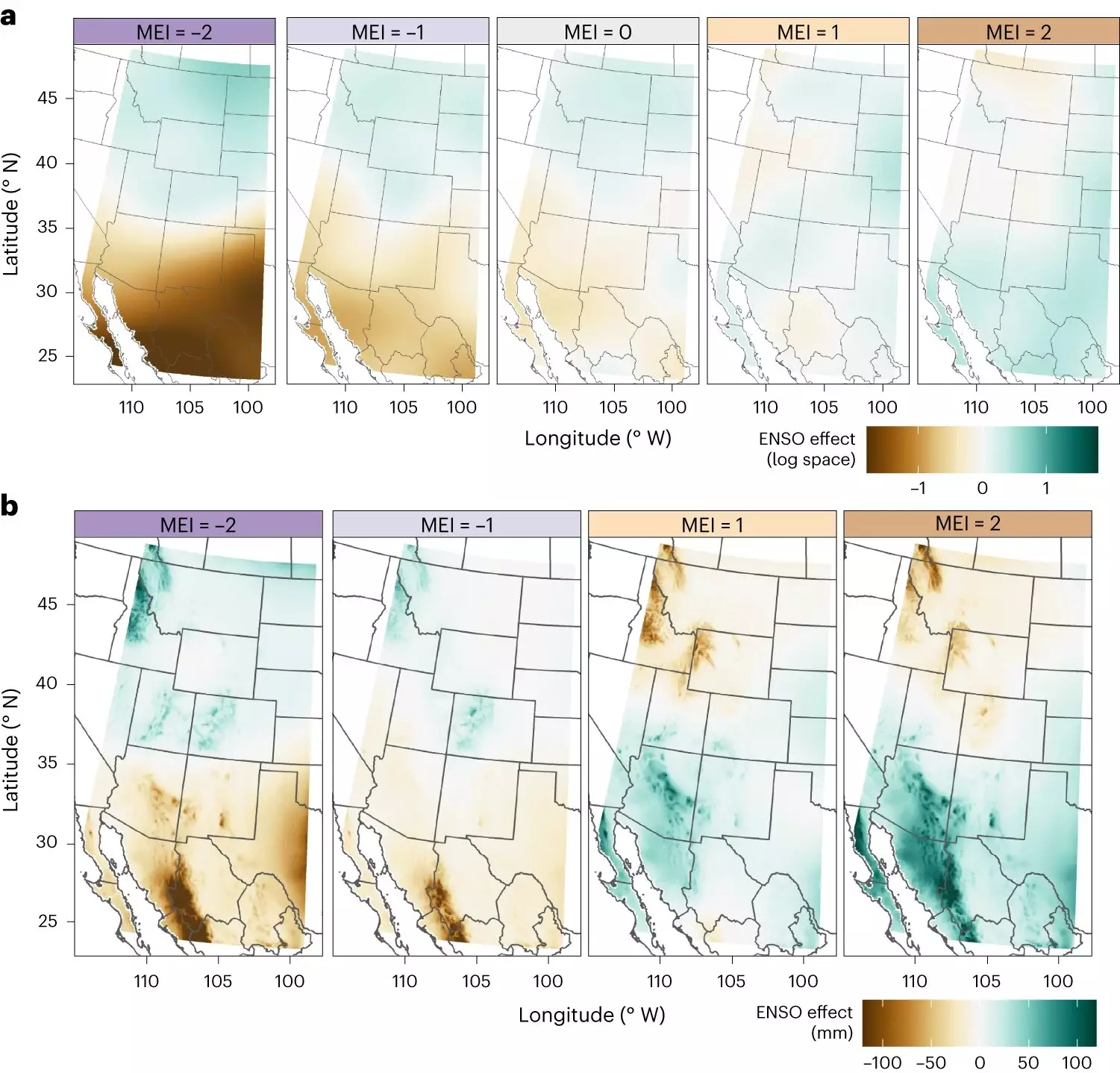A recent study suggests that understanding how mountains influence El Niño and La Niña-induced precipitation change in western North America could improve water conservation planning along the Colorado River. The research compares 150 years of rain and snow data with historic El Niño-Southern Oscillation (ENSO) patterns to make more accurate winter precipitation predictions. The study shows increasing winter precipitation trends in the north and decreasing trends in the south, highlighting the role of mountains in amplifying or obstructing precipitation.
Accurate winter precipitation predictions are crucial for water allocation and conservation planning in western North America, one of the most water-stressed regions in the world. With the majority of precipitation falling during the winter, understanding how much precipitation to expect allows cities, farmers, water managers, and member states of the Colorado River Compact to prepare for drought and implement conservation measures in advance.
El Niño and La Niña are part of the El Niño-Southern Oscillation (ENSO), which refers to warmer or cooler than normal ocean temperatures in the Pacific Ocean region between South America and Australia. These anomalies have widespread impacts on temperatures and precipitation patterns worldwide, including extreme drops or increases in both.
The study focuses on the intermountain West, an area that has historically received less attention in relation to ENSO patterns. By analyzing water gauge readings dating back to 1871, the researchers link actual precipitation levels with specific geographic locations and elevations. This approach provides more precise information about how precipitation changes during El Niño and La Niña years.
Mountains play a significant role in precipitation patterns in the intermountain West. They have both an amplifying and obstructing effect on precipitation. The orographic effect causes moist air from the Pacific to move west to east and then be pushed up over mountains into cooler atmospheres, resulting in precipitation. However, once the air reaches the other side of the mountains, it becomes dry. This effect leads to heavier rainfall on the west side of mountains during El Niño and lower levels of precipitation on the east side during La Niña.
The study highlights regional differences in the response to ENSO. In the south, precipitation change correlates with the strength of El Niño or La Niña. Incremental temperature differences during El Niño are linked to corresponding increments in precipitation change. In contrast, the response in the north is more binary, with precipitation change either happening or not happening. The complexity of the topography, particularly the presence of the Sierra Nevadas, explains this difference.
Understanding these regional differences is crucial for water managers. Forecasts focusing on the strength of El Niño or La Niña are more informative in the north, while quantitative temperature change estimates are more useful in the south. The study’s findings suggest the need for improved data and modeling tools to develop more accurate precipitation forecasts in the near future. Given the importance of water in western North America, stakeholders involved in water management are eager for more reliable predictions.
Mountains significantly influence the impact of El Niño and La Niña on winter precipitation in western North America. By understanding how mountains amplify or obstruct precipitation, water conservation planning can be enhanced. The study’s findings highlight the importance of accurate winter precipitation predictions for water allocation and conservation efforts. Improved forecasting models and data collaboration can contribute to effective resource management in this water-stressed region, benefiting both cities and farmers.


Leave a Reply